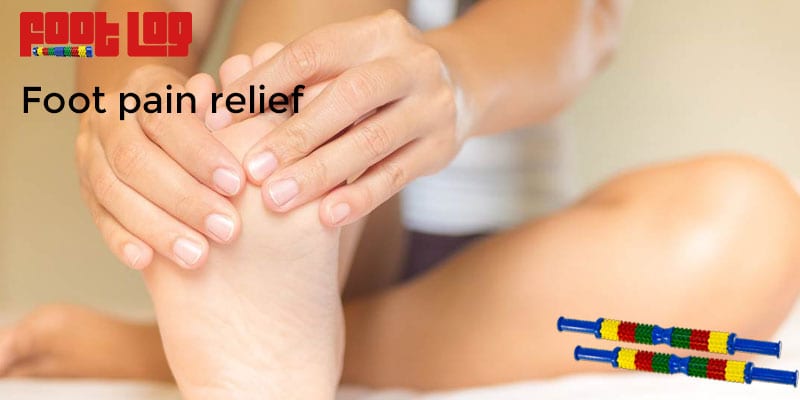A variety of factors can indeed cause pain in the foot. Foot pain can be caused by disorders that damage all of the foot’s tissues, such as the skin, nerves, muscles, skin, joints, tendons, ligaments, bones, blood vessels, & connective tissue. Foot pain is often caused by trauma or accident. Even daily conditions, such as misuse or ill-fitting shoes, can cause temporary, acute foot pain.
Foot pain may be acute, stabbing, throbbing, or dull. It may also seem like such a burning or tingling feeling, which is normal in diseases that affect the peripheral nerves, like diabetes. Many of the foot issues can be solved with foot pain relief therapy.
What may other signs be associated with foot pain?
Depending on the cause & any underlying illnesses or disorders, foot pain can be followed by certain symptoms. Like peripheral vascular dysfunction and diabetic neuropathy, any foot disorders can induce symptoms in several other organ systems.
Foot signs that can arise in conjunction with foot pain
Foot pain can be accompanied by other signs involving all of the foot’s systems, such as:
- A warm or tingling feeling
- Difficulty lifting the foot, toes, or ankle.
- Joint ache
- Numbness
- Rigidity
- Foot and joint swelling
Plantar Fasciitis
Plantar fasciitis is among the most frequent sources of foot pain, which necessitates medication for foot pain. It is caused by inflammation of the plantar fascia, a dense patch of tissue that stretches around the bottom of your foot. The fascia attaches the heel bone to the toes.
Plantar fasciitis causes inflammation around the sole, usually located on the inner portion of the ankle. Plantar fasciitis discomfort is most likely in the mornings after getting up & with strenuous exercise such as running, but you can experience heel pain when merely walking.
Treatment
Physiotherapy of plantar fasciitis consists of therapies that reduce inflammation & improve your biomechanics of the foot, ankle, & bottom extremity overall. Stretching, strengthening, & balancing exercises can be used for plantar fasciitis pain relief.
The same activities can help avoid a recurrence of the disease. If you have foot pain and want to get rid of it, schedule foot pain relief from a licensed massage specialist right away.
Posterior Tibial Tendonitis
The posterior tibialis tendon runs down the inside of your lower leg & connects to the bottom of the foot at the inside arch. The tendon supports the normal arch of your foot, & inflammation here can cause discomfort, reduced walking capacity, & flatfoot deformity.
Treatment
Exercises for stability, stamina, & coordination, as well as anti-inflammatory medications & orthotics, can be used to treat posterior tibial tendonitis (also known as posterior tibial). Your physiotherapist will assess you & advise you mostly on correct medicine for posterior tibial tendonitis.
Continuing with workouts & orthotics, as well as surgery, can help prevent a recurrence. This can be challenging to just do Posterior tibial tendonitis treatment on your own, so it’s best to leave it to a specialist for plantar fasciitis pain relief.
Tarsal Tunnel Syndrome
Tarsal tunnel syndrome happens as the key nerve leading to the foot becomes compressed through tissue or bone. You will be much more acquainted with carpal tunnel syndrome, which is a specific disorder in the wrist. Tarsal tunnel syndrome signs usually include swelling, tingling, & sharp pains on the internal ball of the foot.
Treatment
Tarsal tunnel syndrome is treated with anti-inflammatory medications, orthotics, & footwear modifications. If these do not work, a surgical operation known as tarsal tunnel escape could be an alternative.
Warming up throughout strenuous exercise & maintaining the muscles throughout the area tight & flexible can help avoid tarsal tunnel syndrome. It is advised that you get tarsal tunnel syndrome medication for plantar fasciitis pain relief from a therapist rather than doing it on your own.
Bunions
The bunion is indeed a bony protrusion only at the base of your big toe from the inside of the foot created by either a joint misalignment. It will cause the big toe to point inward, even overlapping the second toe. The lump may cause discomfort, make the shoes awkward, & alter your posture and walking style. The best place to get this kind of foot pain relief is at Foot Log.
Treatment
Nonsteroidal anti-inflammatories and corticosteroid injections are also often used to relieve bunion discomfort. When used in conjunction with other therapies, bunion patches, splints, & orthotics can be beneficial.
Many bunions could be avoided by wearing well-tailored shoes, minimizing high heels, & taking the feet out of shoes wherever possible. Keeping the feet high will also aid in the prevention of bunions. If you want to see the best results from your foot pain relief, you should get a specialist to massage the foot instead of doing it directly.
Conclusion:
Foot pain could be tough to deal with. It may make it difficult to walk normally & can hinder the ability to engage in daily work & leisure activities. Make a consultation with the doctor if you already have daily foot pain & if it appears to be growing worse & more severe, & particularly if you see differences in the shape & size of joints.
Have you just been looking for the right foot massager for a longer time? So, your search has come to an end at Foot Log. We offer the perfect foot massager for people suffering from diabetes, chronic pain, plantar fasciitis, inadequate blood circulation, neuropathy, and other conditions. Call us at 1-801-302-5915 for more information.

